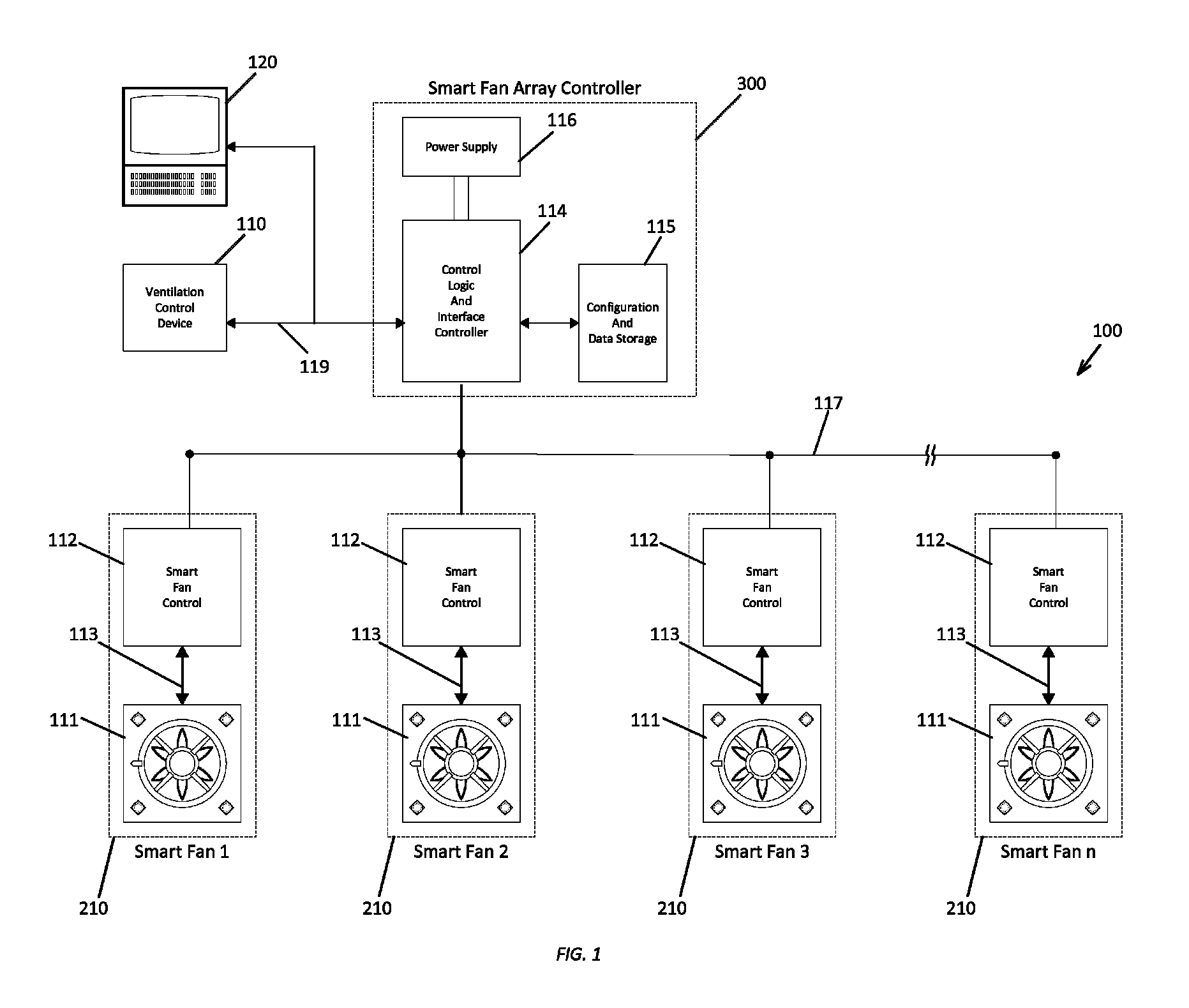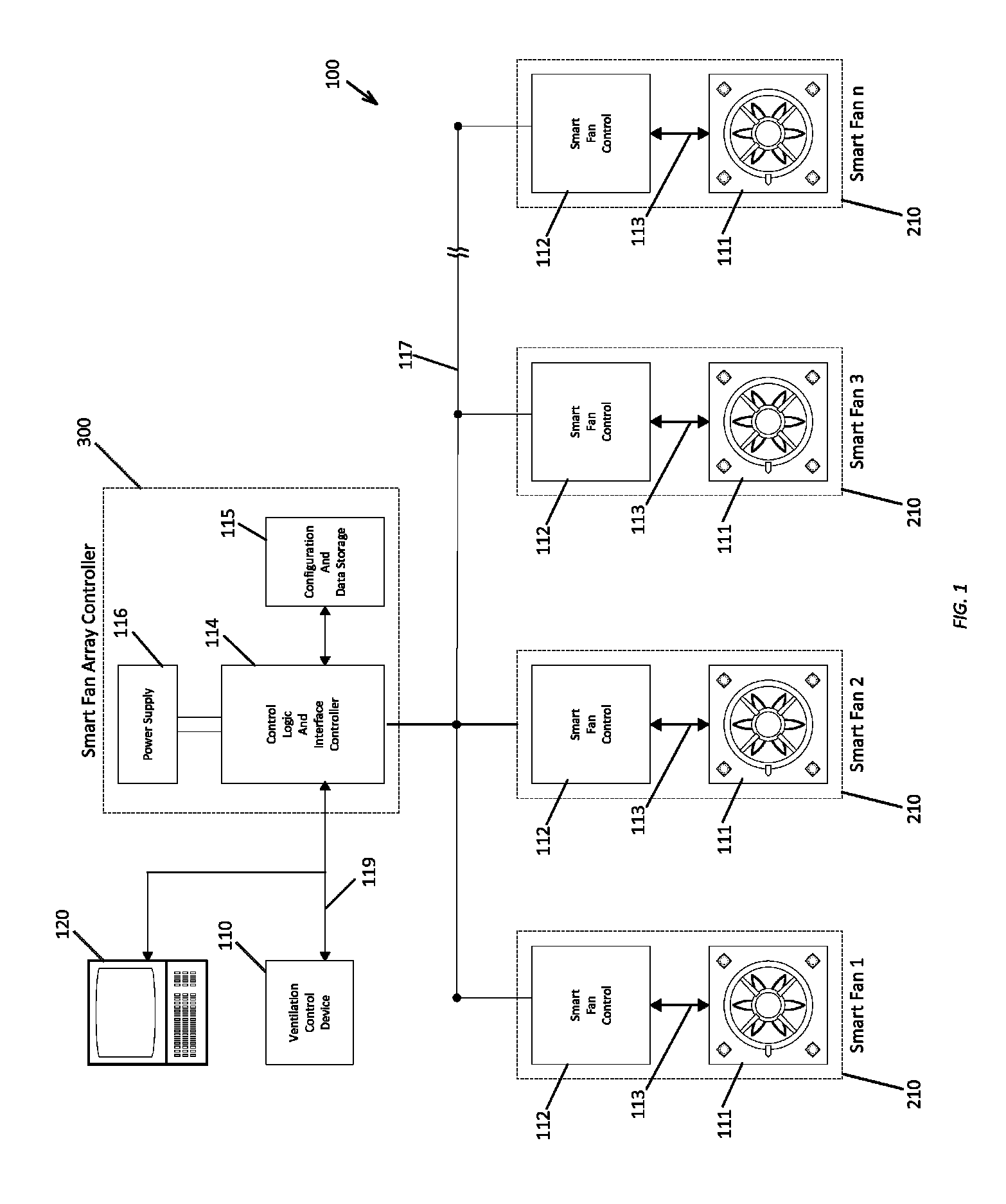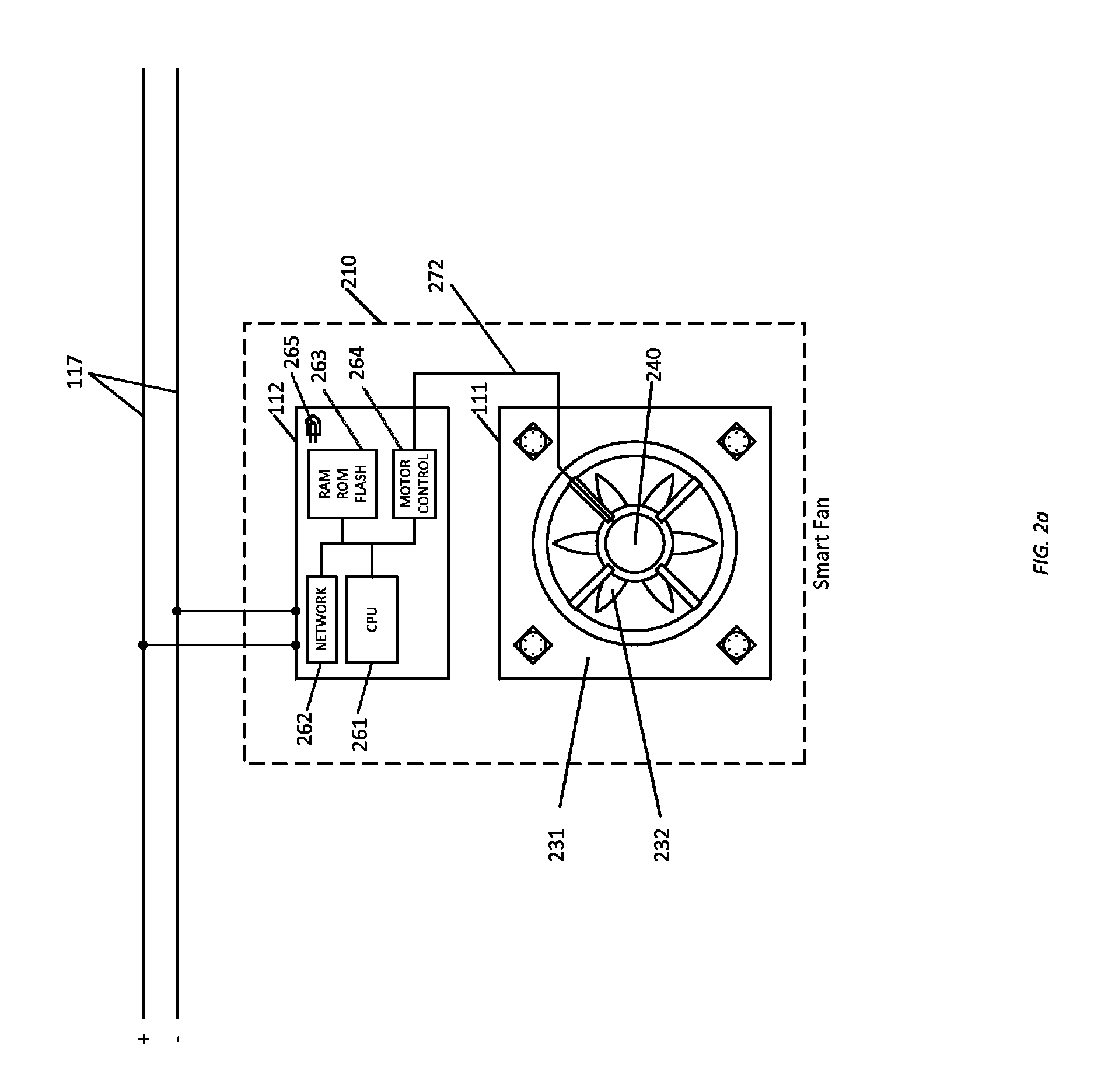Fan array control system
a control system and fan array technology, applied in space heating and ventilation control systems, lighting and heating apparatus, heating types, etc., can solve the problems of fan failure, fan replacement, and inability to achieve the average useful life of the fan, and achieve the effect of prolonging the useful life of the ventilation fan system
- Summary
- Abstract
- Description
- Claims
- Application Information
AI Technical Summary
Benefits of technology
Problems solved by technology
Method used
Image
Examples
Embodiment Construction
Smart Fan Array and Array Controller Embodiment
[0055]Referring to FIG. 1, there is shown a first embodiment of a smart fan array system comprising a smart fan array 100 connected over a local operating network 117 to a smart fan array controller 300.
[0056]Commands for controlling the smart fan array system are primarily received from an external ventilation control device 110 networked via network 119 to the controller 300. Optionally, a computer 120 also may be networked via network 119 for purposes of ventilation control, programming, configuring and initialization of the system. The external ventilation controller 110 may consist of a simple thermostat, or of a more complex processor 120, which determines and conveys ventilation requirements for a target environment, and is designed to send commands to the smart fan array controller 300 to meet such ventilation requirements. Preferably, the external ventilation controller 110 is capable of requesting the following: added ventilat...
PUM
 Login to View More
Login to View More Abstract
Description
Claims
Application Information
 Login to View More
Login to View More - R&D
- Intellectual Property
- Life Sciences
- Materials
- Tech Scout
- Unparalleled Data Quality
- Higher Quality Content
- 60% Fewer Hallucinations
Browse by: Latest US Patents, China's latest patents, Technical Efficacy Thesaurus, Application Domain, Technology Topic, Popular Technical Reports.
© 2025 PatSnap. All rights reserved.Legal|Privacy policy|Modern Slavery Act Transparency Statement|Sitemap|About US| Contact US: help@patsnap.com



